The Big List: 10 Rapid Wave Pool Technologies and How They Work
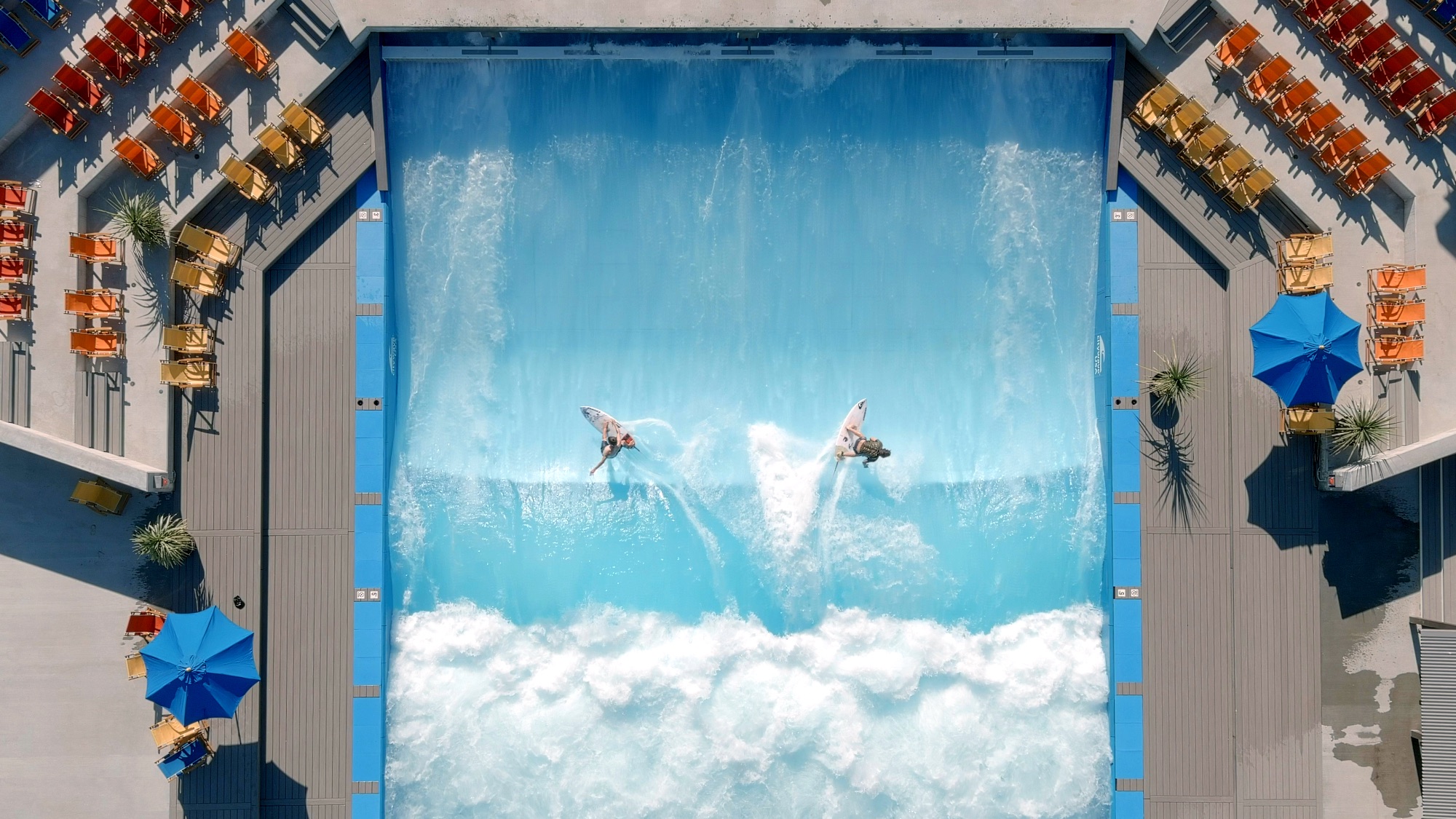
What is a standing wave? Also known as a stationary wave or rapid wave, in surfing terms it is a wave with moving, surf-able water that contains the characteristics of a river rapid wave. Standing wave pools are human made stationary waves designed to produce a wide variety of rapid waves.
How do these waves differ from the surf in other wave pools? One distinction between “traveling wave” and “standing wave” is that one mimics ocean surfing and the other mimics river surfing. Kelly’s, Waco and the Cove are traveling waves where the rider traverses a measurable distance when riding. The Eisbach and Zambezi rivers are rapid waves where you can surf the same wave for several minutes and not travel any longitudinal distance. Although the rider remains in the same dedicated wave space, the movements are very similar to what one does on an ocean wave.
Stationary waves are created when water passes at high velocity over a bottom contour that is shaped in such a way, and resides at such a depth, that it creates a wave. The characteristics of the wave can be controlled in a rapid wave pool.
Terminology: There are three names assigned to wave pools that mimic a river wave: standing, rapid and stationary. As the jury is still out on this one we’ll use all three interchangeably to mean the same thing.
Here are some benefits of standing wave pools
– Smaller footprint, so they work in areas with space limitations
– Standard surfboard equipment can be used instead of specialized craft
– Easier entry threshold to the sport of surfing as a training bar can be deployed
– Intimate environment. Spectators are close to the action which creates a group atmosphere
– Offers variety for wave parks with traditional wave pools, adding more surf options for visitors
Editor’s Note: For additional information about these companies see our August 2020 article Guide to the major standing wave pool technologies
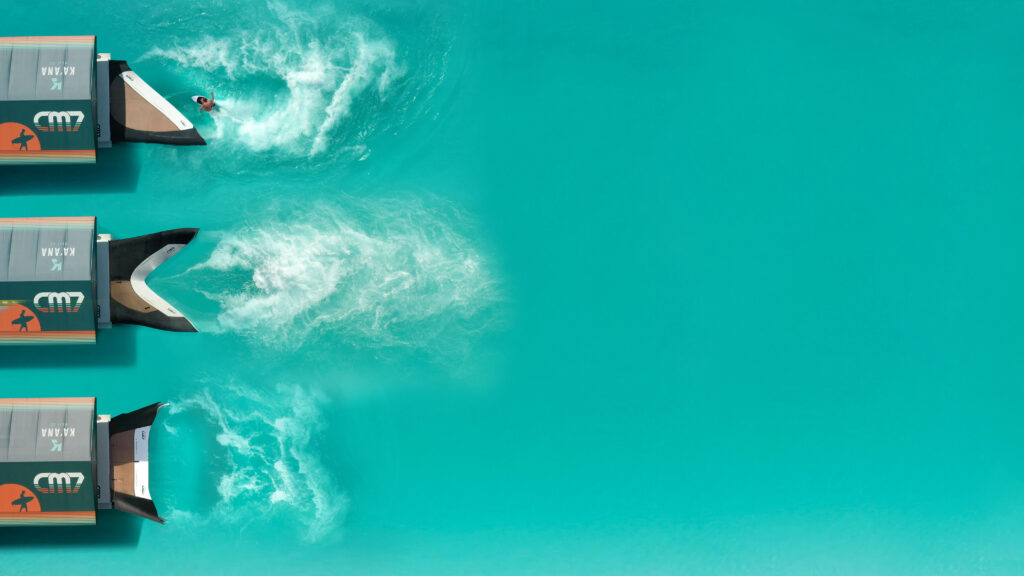
Invented by Canadian boarder Jamie Watson, the CM7 standing wave system from Ka’ana Wave Co is a bathymetry-agnostic design that produces a wide variety of wave types via a dock that can be installed in almost any pool size. Under the dock is a motor and drivetrain that forces water through a wave-shaping head. Shaping heads protrude from the dock and into the pool bending the high-pressure flow into any one of a variety of waves. Wave type is changed by swapping out the shaping head on the machine. The CM7 differs from other rapid wave pools as it’s “bathymetry agnostic” – meaning there is not an underwater ramp that creates the wave. The interchangeable shaping heads produce everything from an Eisbach-like rapid to a barreling Zambezi river wave. Intensity and shape of that wave are also altered by adjusting flow volumes and velocities of water. Further refinement can be achieved by articulating the pitch and plunge of the head. All adjustments are controlled through sophisticated software.
Ka’ana’s CM7 Series wave machines will be available in five sizes, from a CM7-XS up to a CM7-XL. The company should have its first production CM7-Medium unit in a pool, shortly.
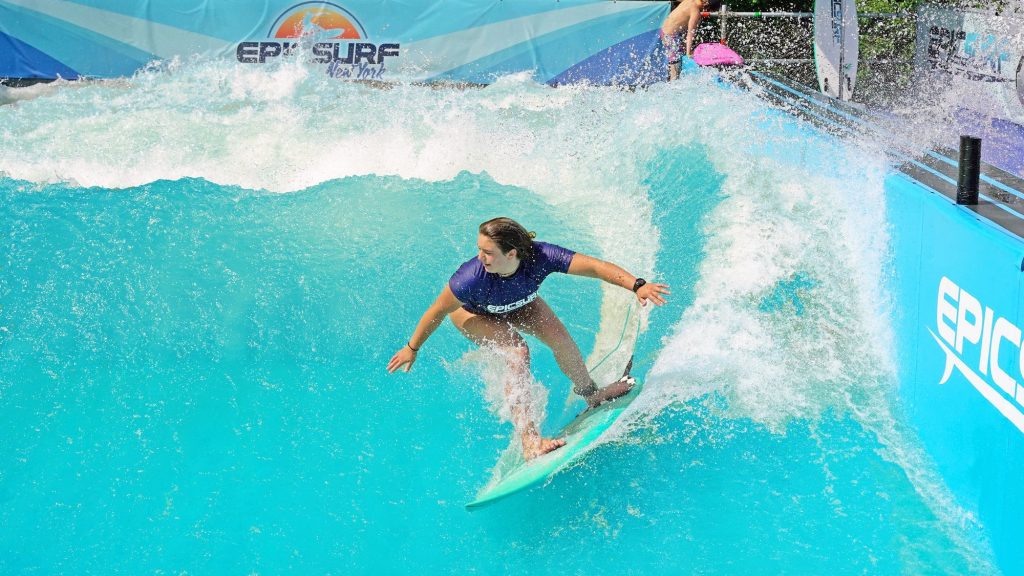
Aquatic Development Group has been in the water park business for several decades and in 2021 announced the launch of their new EpicSurf stationary surf wave. The system is a deep-water wave compatible with traditional surfing equipment. EpicSurf says their system’s waves can be adjusted from between 3-to-5-feet. Jets force water over a ramp to create a standing wave. The whole thing is controlled by what the company calls their Rapid Wave Adjustability system – a remote access control system that allows the operator to tune the wave. Surfers can choose an instantly customizable wave matched to their skill level. Dual training bar options are also available for beginners to help ease them onto the wave. EpicSurf wave surfaces start with a width of 30-feet and can expand from there in increments of 8’ depending on the specific site plan or business needs.
ADG is well known in the industry with 100 design-build projects to their credit. They are also the team responsible for the development, manufacturing, and installation of more than 125 FlowRiders across North America. They have installed various types of wave pools in more than 500+ projects around the world including resorts and water parks, as well as in aquariums, water rescue training facilities, fountains, and even motion pictures.
The complete package price for an EpicSurf range from $1.5 – $2.5 million US. The base footprint for an EpicSurf system is 30’x90’ which provides a 30’ riding surface.
Artwave
This system is an innovative “wing” that’s pulled just under the surface of standing bodies of water. The engine pulls the surf-making wing via cables and pulleys. Minimum requirement is 40m x 150m free water area around 6m deep (absolute minimum is 4m) and a non-erosion shoreline (rocks or concrete.)
Videoclips show a prototype that produces a 1m wave from a system utilising an 8m wide underwater wing. The planned production quality system will be able to produce a 1,8m (ie 6 footer). In full version width the wavemaker will be 12m so that 2 surfers can surf simultaneously. The tech is said scale relatively easily, so even larger wave are doable. By changing speed and trim the wave shape can be modified. But the company says they will modify and experiment with the wing profile. They state that the test model uses one of the most common NACA profiles from aerodynamics research. “We have certain ideas about e.g. asymmetric wings,” says CEO Also Andersen. “In sum, we are taking only first steps in shaping the wave.”
The system is floating like a boat and operates so that “boat” is pulled towards shore. Appropriate length of a run is 20sec which is doable with 150-200m water area. The more water capacity surrounding the device, the better the wings operate.
Artwave told WavePoolMag that the end-user area consists of three parts:
1) safety areas at the start and end zones (20m each)
2) run area
3) line-up.
“Of these, run area is most important. The wings move in depth of 1,5m with speed of 2,5 – 3m/s. Wave takes form on top of latter wing. If surfer falls wings have moved away as surfer hits the water. We have not seen anyone falling and touching wings. If surfer is on top of board in run area there is no risk Otherwise swimming pool safety set-up applies (users need to know how to swim etc).”
Unit
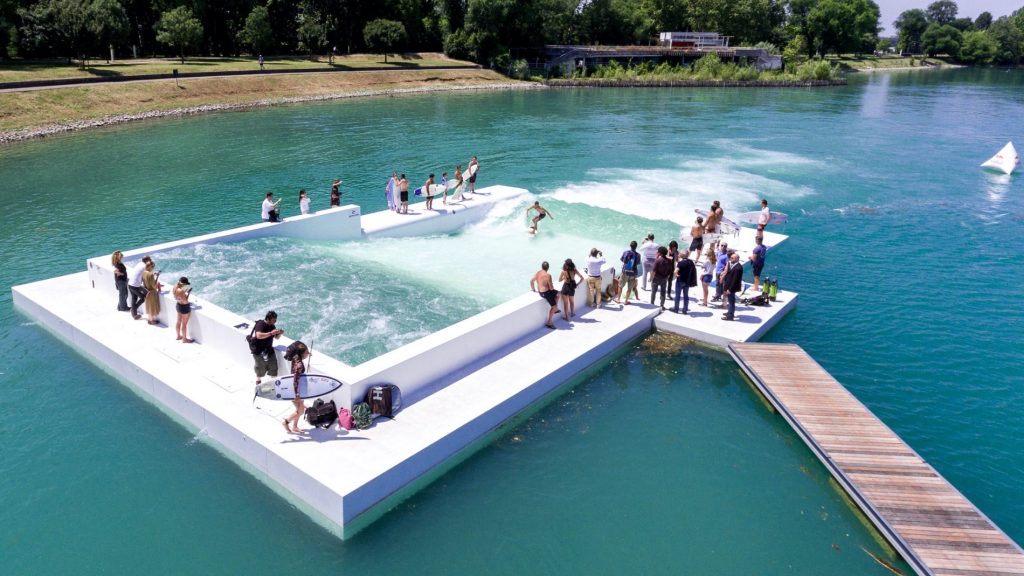
Conceived in Germany and distributed in the US by wakeboarding legend Tony Finn, the Unit rapid wave pool is unique in that it can be deployed as a floating pool, permanent dug-in pool, and as an above-ground temporary or permanent pool. The company says the floating surf pool, like the one installed at Wake Paradise in Milan Italy, is the most popular. Unit’s wave system creates a deepwater wave that is limited only by the width of the pool. The size and steepness of the wave are controlled by water pressure from the jets and a few other secret angles of the ramp. The company offers varying builds to accommodate a client’s locations and use types, both commercial and personal, and adds that there are little to no construction costs in the floating pool option. Unit says the floating system is very energy efficient and can be installed in two weeks. In addition, if the rapid wave pool is installed in a lake, the wave action will add aeration to dead bodies of water.
Pricing for a Unit Surf Pool is $1 – $10 million US. The base footprint starts at 8 meters and can go up to 80+ meters wide and 36 meters long (26 ft to 260 ft+ wide, 118 ft long). There are currently 2 Unit surf pools in operation with 25 more in development.
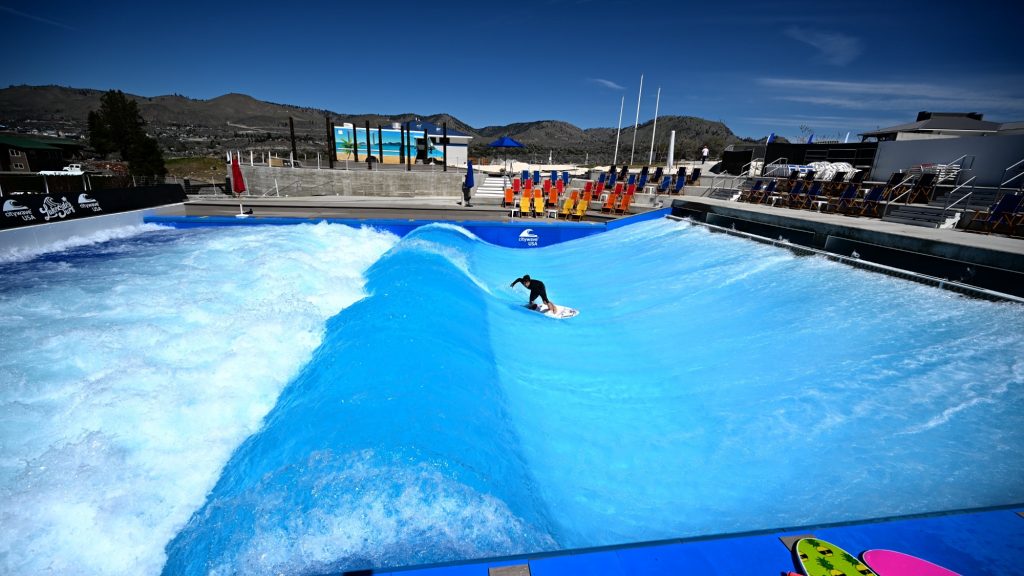
Developed by Rainer Klimaschewski and his wife Susi Klimaschewski after studying the Eisbach River wave, this rapid wave pool system can be found at installations throughout the world, especially in Europe. Citywave’s system is powered by a huge pump that forces water through specialized floaters directing the flow out into the pool and over a submerged ramp. Wave heights can go up to 6 feet with maximum pressure. Water speed can be adjusted to ensure a stable and controlled rapid wave. The wave is adjusted through software synced with a control system and easily modified. The company says that water depth is sufficient enough that riders can bodysurf. They also offer a sheeting option of wood, plastic or metal. Surrounding areas are customizable to create either a stadium feel or a relaxed poolside atmosphere. citywaves can be found in the Munich airport and at the Wellenwerk arena in Berlin which hosted the 2020 German Surfing Championships.
citywave pricing starts at $1.3million US and goes up depending on pool size. The new citywave at Wai Kai in Hawaii is nearly 100 feet wide. citywaves are installed at 14 locations around the world with 10 new projects in the works.
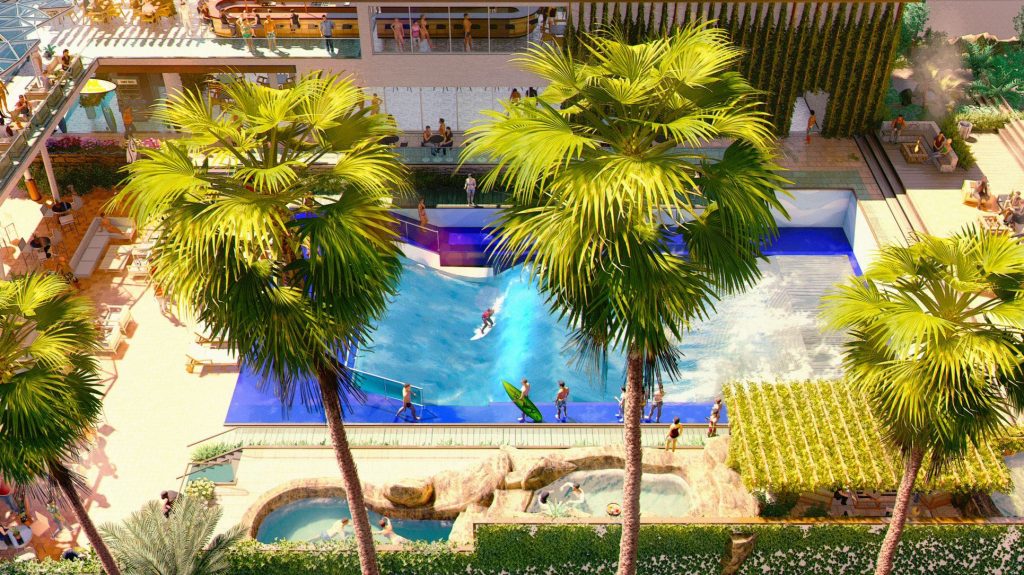
Modeled after the Waimea River Wave, FlowSurf is a new deep flow stationary wave by FlowRider. FlowRider says their goal is to create a stationary wave with less turbulence for a better carving experience while also using a low amount of energy possible while being a wave that surfers absolutely love. The wave height can be adjusted from one-to-four feet via programming buttons so the wave pool can cater to beginners, experts, and anyone in between. The wave height can be adjusted from two-to-five feet (0.9 meters (2ft 11″) to 1.6m (5’2″) if you want to get specific) via programming buttons so the wave pool can cater to beginners, experts, and anyone in between. The base footprint starts at 20.8m (68.24 ft) x 14.6m (47.9 ft) but can vary according to venue needs. At this size the wave pool only takes 136K gallons of water to fill and operate.
Pricing for a FlowSurf starts at $1.5 million. The company says that the maximum width is unlimited and customisable.
Dreamwave
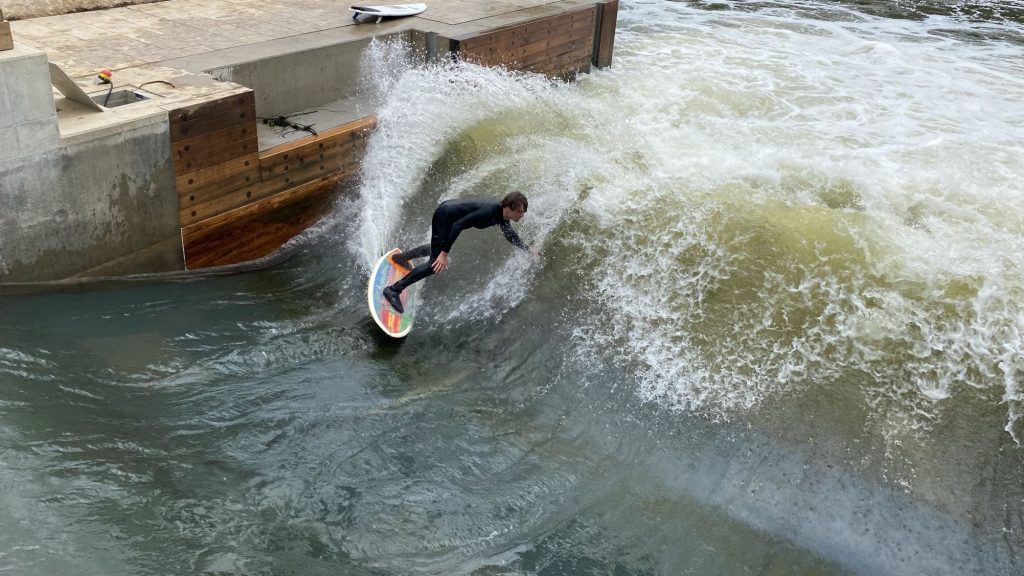
This type of rapid wave pool doesn’t fit neatly into any one category. At its most basic, it’s diverting river flow to an artificially created bank that has been designed to produce a desirable rapid wave. The Dreamwave system can be adapted to varying waterlevel and discharge changes to create and maintain a surf-able wave. According to the company, “Depending on the boundary conditions a narrow wave of 18 feet alternates with a powerful 26-footer reaching 4-5 feet.” The river is dammed and the energy of the water itself is released into the wave, through a side channel, so no power is needed. The company boasts that “As there are no straight lines in nature, the wave looks different from day to day and surfer to surfer.” You can find this rapid wave technology at Enercity Leinewelle in Hannover and Nürnberger Dauerwelle, Germany.
Yourwave
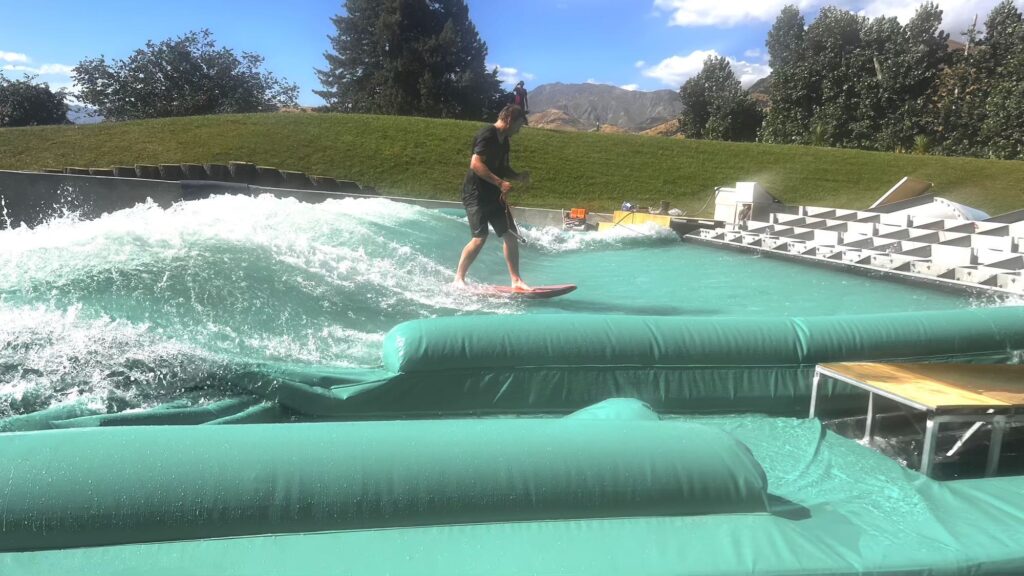
YourWave can easily alter the face of the wave in almost real time to cater for surfers of different skill levels, producing both left and right hand breaks, barrelling waves and easy front-on waves. This is achieved using patented airform technology (akin to a bouncy castle) making it very safe to surf and even safer to wipe out on. Unlike sheet wave machines, YourWave uses a thick bed of smooth, non-turbulent water which allows the use of normal surfboards.
Hydrostadium
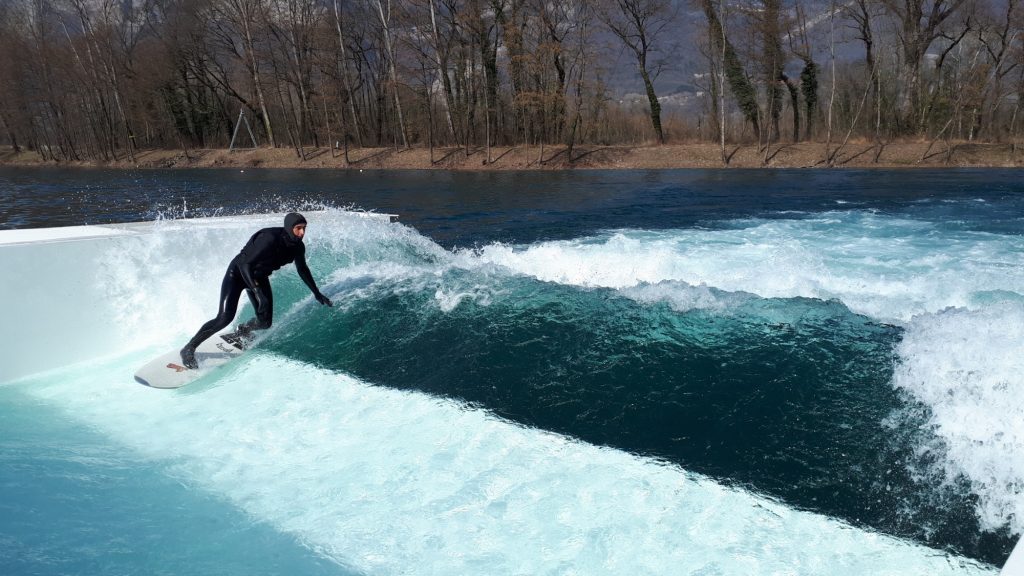
Hydrostadium has created two modular rapid wave systems, Wavestadium and WaveBoat. Both systems can generate surf from 2’ to 4.5’ by directing a flow of water over a submerged ramp. Both systems claim to use less than 300 kWh to generate a 33-foot-wide wave.
Wavestadium is their pool model designed for indoor use. Water circulates in a closed-loop one-quarter the size of an Olympic pool. The pumps are submerged under the pool to avoid noise pollution and help heat the water. Each pump corresponds to a predefined width, so more pumps mean a wider surf area.
The WaveBoat offers the same wave capacity as the fixed-pool stadium version but is instead, a floating structure. Components come separate and are assembled onshore before the portable surf spot is dropped into lakes, ponds, or rivers. The system is buoyed by two floats similar to that of a catamaran. The minimum water depth required is12 feet. There are three basic Wavestadium and WaveBoat widths: 26’, 33’, and 40’, but the company says they can customize to any width.
The price for a Hydrostadium 33’ wide system is roughly $1.2million US. The company has rapid wave pools in three locations in France.
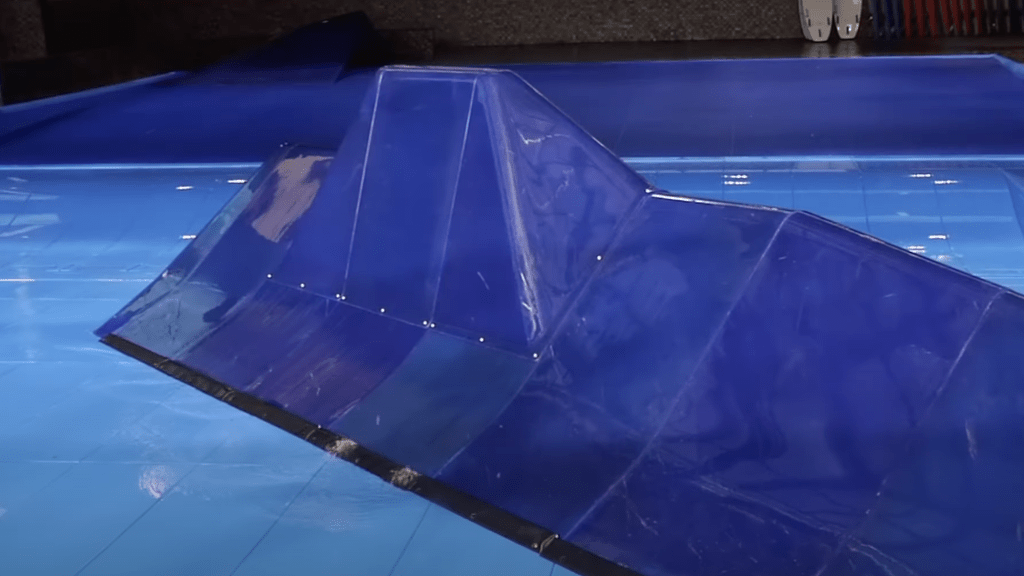
SurfStream wave pools launched a couple of years before American Wave Machine’s popular PerfectSwell traveling swell technology debuted in Waco Texas. SurfStream currently powers more than a dozen wave parks around the world, including one in New Hampshire that has hosted several East Coast Surfing Association events. Like other rapid waves, American Wave Machines’ SurfStream design directs a powerful flow of water over a specially designed bottom contour to produce a surfable wave. The underwater modular component is adjustable and can be relocated to different parts of the pool to produce a right or a left. When combined with different levels of water pressure, the wave created can either be a soft roller or a barrel. The company adds that beginner waves using a soft rolling whitewater setting are optimal when combined with a beginner bar. The whole system is programable through their custom software.
SurfStream Systems Pricing: Company did not provide details but sources indicate a pricepoint between $4-6million US. Current SurfStreams average in size at nine meters (32 feet) wide.
Related Coverage
